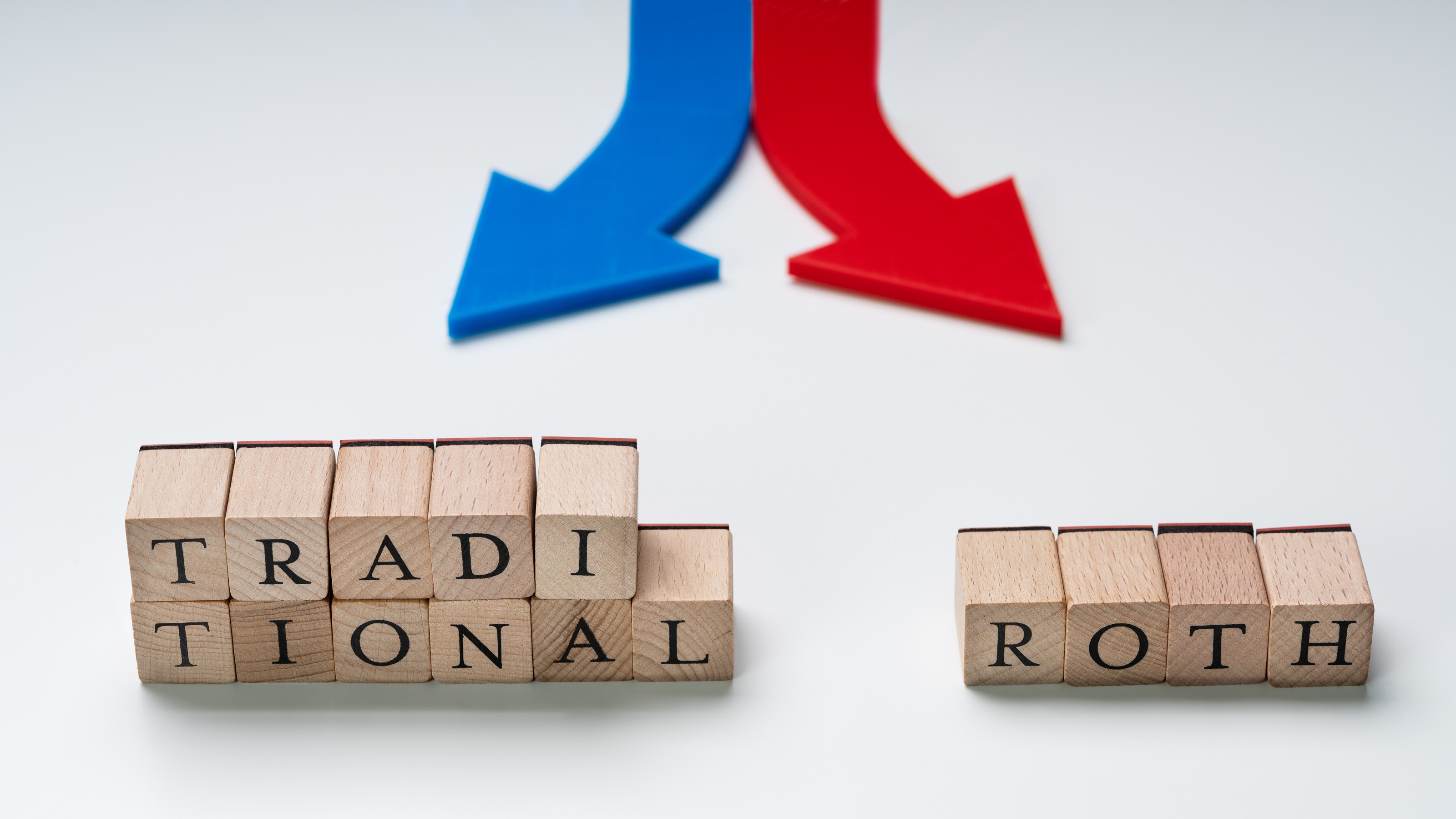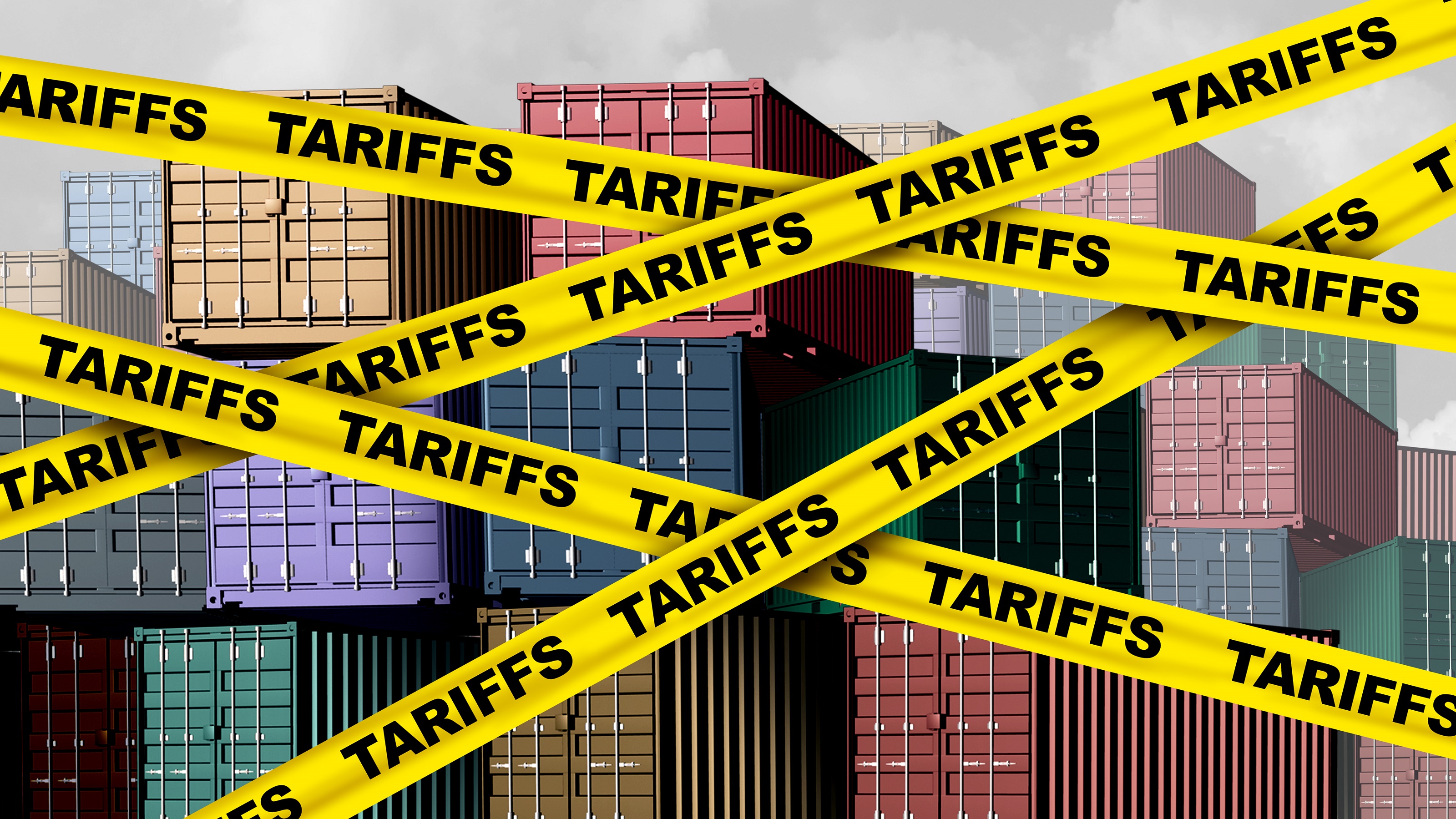Roth or Traditional? Seven Considerations for High Earners
Retirement savings and taxes are a minefield — and the higher your income, the more complicated the options. Use these tips to find your way forward.


When it comes to retirement savings, high earners face unique challenges and opportunities. Deciding between pre-tax traditional IRAs/401(k)s and post-tax Roth IRAs/401(k)s is not a one-size-fits-all decision. A well-thought-out strategy tailored to individual circumstances can make a significant difference in retirement outcomes. There are several key considerations for you to make, and your answers can help guide your decision-making process.
Classic deductible IRA and Roth IRA contributions can be out of reach for high earners with workplace retirement plans such as a 401(k)/403b/457s. Married couples filing taxes together are ineligible for 2025 deductible IRA contributions with modified adjusted gross incomes (MAGI) over $146,000. Roth IRA contributions ignore workplace retirement plan involvement, but those married filing jointly become ineligible with MAGI over $246,000.
Luckily, most workplace retirement plans allow employees to choose between traditional or Roth employee retirement plan contributions. According to T. Rowe Price, 93% of 401(k) plans offered Roth employee contribution options as of 2023, with 14% of participants using the feature. While participation seems low, this savings option only arrived in 2006. Traditional and Roth 401(k) contributions are not subject to any income limitations. So how do you choose?

Sign up for Kiplinger’s Free E-Newsletters
Profit and prosper with the best of expert advice on investing, taxes, retirement, personal finance and more - straight to your e-mail.
Profit and prosper with the best of expert advice - straight to your e-mail.
1. Evaluate your current and future tax situation
One of the first questions to address is how your tax bracket today compares to your expected tax bracket in retirement.
Traditional accounts allow for tax-deferred growth, with contributions reducing taxable income today. However, required minimum distributions (RMDs) starting at age 73 if born between 1951 and 1959, and age 75 if born after 1960, could push you into a higher tax bracket in retirement. Those mandatory RMDs are taxed as ordinary income.
Roth accounts require paying taxes upfront but offer tax-free growth and withdrawals, making them attractive if you expect to be in a higher tax bracket later.
If you’re planning to retire in a lower-tax state, traditional contributions can make sense but having both traditional and Roth accounts allows flexibility depending on a year-by-year tax situation.
2. Consider your non-retirement investments
High-income households often have significant non-retirement investments that generate capital gains and income. This additional taxable income can influence the decision between Roth and traditional accounts.
Roth assets can provide a tax-free withdrawal option, complementing taxable accounts and giving you flexibility between tax-free and taxable withdrawal options in retirement.
Traditional accounts may defer taxes but could amplify the tax burden when combined with other income sources later in life.
3. Plan for RMDs and charitable giving
Traditional retirement account contributions come with ordinary income generating RMDs. Qualified charitable distributions (QCDs), or sending all or part of that RMD to charity, offers a tax-efficient way to meet RMD requirements for those charitably inclined. In contrast, Roth accounts have no RMDs during the account holder’s lifetime.
4. Think about your legacy and the next generation
The SECURE Act changed rules for most non-spouse inheritors of pre-tax/traditional retirement accounts, requiring those beneficiaries to distribute assets within a 10-year window potentially generating high ordinary income in that decade. Those inheriting Roth assets maintain the tax-free status.
5. Consider a well-timed Roth conversion
For high earners nearing retirement, Roth conversions can be a powerful tool — especially during early retirement years before claiming Social Security. These conversions allow you to “fill up” lower tax brackets gradually, avoiding a tax spike in later years. Many 401(k)/403b/457 plans allow in-plan Roth conversions also.
If pre-tax/traditional accounts make up the majority of your retirement assets, Roth conversions can help reduce future RMD and ordinary income tax obligations. When making conversions, working with a CPA will help you optimize your conversion amounts and ensure accuracy, as recharacterizations are no longer allowed as a result of the 2017 Tax Cuts and Jobs Act.
6. Split contributions between Roth and traditional accounts
Many employer-sponsored retirement plans allow for splitting employee contributions between traditional and Roth accounts, offering flexibility. This hybrid approach provides a hedge against future tax uncertainty. Determining the right split involves assessing current income needs, legacy goals and anticipated changes to tax laws or personal circumstances.
More advanced strategies, such as backdoor Roth IRA contributions and mega-backdoor Roth IRA contributions, also exist but are outside the scope of this article.
7. Take advantage of emerging Roth opportunities
High-income households can also take advantage of the higher contribution limits for Roth 401(k)s — up to $31,000 in 2025 for participants aged 50 or older. For more on the implications of the SECURE 2.0 Act, read the post I wrote after the law was enacted, The SECURE Act New Era – Retirement & Financial Planning Reminders.
Beginning in 2026, high-income retirement plan savers over 50 years old must execute their employee deferral catch-up contribution as a Roth. Employer match contributions may increasingly see Roth designation. As federal deficits continue to increase, adoration of Roth contributions by policymakers does too. Receiving tax revenue quickly helps the budget-scoring process of proposed legislation.
Final thoughts: Plan early and remain flexible
Estimating your future bracket can be difficult. Life happens and circumstances can always change. However, for married filing jointly couples currently and expected to remain in the top federal income tax bracket of 37% at over $751,600 of income in 2025, pre-tax/traditional contributions while working likely make sense. For early career savers and those with incomes projected to rise, Roth retirement account contributions can make a lot of sense.
When deciding between Roth and traditional accounts, the right answer depends on your unique situation. Factors such as tax strategy, retirement goals, legacy planning and expected changes in income or family dynamics all play a role.
Starting the conversation early allows for thoughtful planning and flexibility to adapt as circumstances evolve. With the right approach, high earners can maximize their after-tax retirement savings and create a more secure financial future.
This article is provided for informational purposes only, represents only a summary of topics discussed, and does not represent any investment, legal, or tax advice or recommendations. Readers must evaluate their own financial circumstances and needs and are strongly recommended to consult their professional advisors prior to making any decisions about their retirement planning. Certain of the content contained herein also represents the opinions of the author, which are subject to change without notice. Any changes in current laws or regulations could lead to vastly different conclusions from those described herein.
Related Content
Get Kiplinger Today newsletter — free
Profit and prosper with the best of Kiplinger's advice on investing, taxes, retirement, personal finance and much more. Delivered daily. Enter your email in the box and click Sign Me Up.

Tim Kingsbury is a Veris Partner, Advisor and a CERTIFIED FINANCIAL PLANNER™ professional. Based in the firm’s New York office, Tim is focused on helping clients meet their financial and impact goals. Prior to Veris, Tim worked for eight years at Wetherby Asset Management in San Francisco, most recently as a Senior Investment Associate. At Wetherby, Tim helped high-net-worth families, charitable organizations and institutions with financial planning and portfolio management, employing both impact and traditional investments.
-
 Planning for Health Care Costs in Retirement: A Comprehensive Guide
Planning for Health Care Costs in Retirement: A Comprehensive GuideMedical expenses aren't slowing down, and if you're not prepared, they can hit you like a ton of bricks.
By Bob Chitrathorn
-
 When Should You Hand Over the Keys — to Your Investments?
When Should You Hand Over the Keys — to Your Investments?The secret to retirement planning? "The best time to hand over the keys is before you’ve realized you need to hand over the keys."
By Maurie Backman
-
 When Should You Hand Over the Keys — to Your Investments?
When Should You Hand Over the Keys — to Your Investments?The secret to retirement planning? "The best time to hand over the keys is before you’ve realized you need to hand over the keys."
By Maurie Backman
-
 Going to College? How to Navigate the Financial Planning
Going to College? How to Navigate the Financial PlanningCollege decisions this year seem even more complex than usual, including determining whether a school is a 'financial fit.' Here's how to find your way.
By Chris Ebeling
-
 Financial Steps After a Loved One's Alzheimer's Diagnosis
Financial Steps After a Loved One's Alzheimer's DiagnosisIt's important to move fast on legal safeguards, estate planning and more while your loved one still has the capacity to make decisions.
By Thomas C. West, CLU®, ChFC®, AIF®
-
 How Soon Can You Walk Away After Selling Your Business?
How Soon Can You Walk Away After Selling Your Business?You may earn more money from the sale of your business if you stay to help with the transition to new management. The question is, do you need to?
By Evan T. Beach, CFP®, AWMA®
-
 Two Don'ts and Four Dos During Trump's Trade War
Two Don'ts and Four Dos During Trump's Trade WarThe financial rules have changed now that tariffs have disrupted the markets and created economic uncertainty. What can you do? (And what shouldn't you do?)
By Maggie Kulyk, CRPC®, CSRIC™
-
 I'm Single, With No Kids: Why Do I Need an Estate Plan?
I'm Single, With No Kids: Why Do I Need an Estate Plan?Unless you have a plan in place, guess who might be making all the decisions about your prized possessions, or even your health care: a court.
By Cynthia Pruemm, Investment Adviser Representative
-
 Most Investors Aren't as Diversified as They Think: Are You?
Most Investors Aren't as Diversified as They Think: Are You?You could be facing a surprisingly dangerous amount of concentration risk without realizing it. Fixing that problem starts with knowing exactly what you own.
By Scott Noble, CPA/PFS
-
 Retire in Malta for Quiet Coastal Perfection
Retire in Malta for Quiet Coastal PerfectionSeemingly remote yet easily accessible to other points in Europe, sunny Malta offers paths to citizenship and residency for families and retirees.
By Drew Limsky